LTC6605CDJC-10#TRPBF Active Filter: Product Overview and Applications
Tape & Reel (TR) Active Filters Active 22 ROHS3 Compliant DUAL
This article provides an in-depth analysis of the LTC6605CDJC-10#TRPBF active filter, manufactured by Linear Technology/Analog Devices. It delves into the features, applications, reference designs, alternative parts, and FAQs related to this product, offering valuable insights for electronic engineers and enthusiasts.
Product Introduction
Description:
The LTC6605CDJC-10#TRPBF is a versatile active filter designed for a wide range of applications in the field of electronics. With its compact 22-WFDFN Exposed Pad surface mount package and a supply voltage range of 2.7V to 5.25V, this active filter offers high performance and reliability. It features dual terminal position with a terminal pitch of 0.5mm, making it suitable for various circuit designs.
Features:
- Operating voltage range of 2.7V to 5.25V
- Dual terminal position with no lead
- Supply current-max of 90mA
- Common mode rejection ratio of 74 dB
- 2nd order filter with a cutoff frequency of 5MHz
- RoHS3 compliant and suitable for commercial temperature grades
Applications:
Primary Applications:
1. Antialiasing Filters: The LTC6605CDJC-10#TRPBF active filter is commonly used in antialiasing applications to remove unwanted frequency components from signals before sampling.
2. Signal Processing: It can be utilized in signal processing circuits to enhance the quality of the output signal by filtering out noise and interference.
Secondary Applications:
1. Data Acquisition Systems: The active filter can be integrated into data acquisition systems to improve signal accuracy and reduce distortion.
2. Communication Systems: It finds applications in communication systems for signal conditioning and noise reduction.
Applicable Specific Modules:
- Data acquisition modules
- Signal processing modules
- Communication interface modules
Reference Designs:
1. Data Acquisition System Reference Design: This reference design showcases the integration of the LTC6605CDJC-10#TRPBF active filter in a high-precision data acquisition system, demonstrating its performance and versatility in real-world applications.
Alternative Parts:
For users seeking alternative options, the following parts can be considered as substitutes for the LTC6605CDJC-10#TRPBF active filter:
1. LT6605CDJC-10#TRPBF: A similar active filter with a slightly different pin configuration but compatible with most applications.
2. LTC6605CDJC-20#TRPBF: An active filter with a higher cutoff frequency and improved performance for specific applications.
FAQs:
Q1: What is the maximum supply voltage supported by the LTC6605CDJC-10#TRPBF active filter?
A1: The LTC6605CDJC-10#TRPBF can handle a maximum supply voltage of 5.5V, ensuring reliable operation in various circuit configurations.
Q2: Is the LTC6605CDJC-10#TRPBF suitable for high-temperature environments?
A2: The LTC6605CDJC-10#TRPBF is designed for commercial temperature grades, with an operating temperature of up to 70°C, making it suitable for most standard applications.
In conclusion, the LTC6605CDJC-10#TRPBF active filter offers a comprehensive solution for signal conditioning and filtering requirements in diverse electronic applications. Its compact design, wide supply voltage range, and high-performance features make it a valuable component for engineers looking to enhance the functionality of their circuits.
Specifications
- TypeParameter
- Factory Lead Time16 Weeks
- Mounting Type
The "Mounting Type" in electronic components refers to the method used to attach or connect a component to a circuit board or other substrate, such as through-hole, surface-mount, or panel mount.
Surface Mount - Package / Case
refers to the protective housing that encases an electronic component, providing mechanical support, electrical connections, and thermal management.
22-WFDFN Exposed Pad - Surface Mount
having leads that are designed to be soldered on the side of a circuit board that the body of the component is mounted on.
YES - Operating Temperature (Max.)70°C
- Packaging
Semiconductor package is a carrier / shell used to contain and cover one or more semiconductor components or integrated circuits. The material of the shell can be metal, plastic, glass or ceramic.
Tape & Reel (TR) - Published2005
- JESD-609 Code
The "JESD-609 Code" in electronic components refers to a standardized marking code that indicates the lead-free solder composition and finish of electronic components for compliance with environmental regulations.
e3 - Part Status
Parts can have many statuses as they progress through the configuration, analysis, review, and approval stages.
Active - Moisture Sensitivity Level (MSL)
Moisture Sensitivity Level (MSL) is a standardized rating that indicates the susceptibility of electronic components, particularly semiconductors, to moisture-induced damage during storage and the soldering process, defining the allowable exposure time to ambient conditions before they require special handling or baking to prevent failures
1 (Unlimited) - ECCN Code
An ECCN (Export Control Classification Number) is an alphanumeric code used by the U.S. Bureau of Industry and Security to identify and categorize electronic components and other dual-use items that may require an export license based on their technical characteristics and potential for military use.
EAR99 - Terminal Finish
Terminal Finish refers to the surface treatment applied to the terminals or leads of electronic components to enhance their performance and longevity. It can improve solderability, corrosion resistance, and overall reliability of the connection in electronic assemblies. Common finishes include nickel, gold, and tin, each possessing distinct properties suitable for various applications. The choice of terminal finish can significantly impact the durability and effectiveness of electronic devices.
Matte Tin (Sn) - Voltage - Supply
Voltage - Supply refers to the range of voltage levels that an electronic component or circuit is designed to operate with. It indicates the minimum and maximum supply voltage that can be applied for the device to function properly. Providing supply voltages outside this range can lead to malfunction, damage, or reduced performance. This parameter is critical for ensuring compatibility between different components in a circuit.
2.7V~5.25V - Terminal Position
In electronic components, the term "Terminal Position" refers to the physical location of the connection points on the component where external electrical connections can be made. These connection points, known as terminals, are typically used to attach wires, leads, or other components to the main body of the electronic component. The terminal position is important for ensuring proper connectivity and functionality of the component within a circuit. It is often specified in technical datasheets or component specifications to help designers and engineers understand how to properly integrate the component into their circuit designs.
DUAL - Terminal Form
Occurring at or forming the end of a series, succession, or the like; closing; concluding.
NO LEAD - Peak Reflow Temperature (Cel)
Peak Reflow Temperature (Cel) is a parameter that specifies the maximum temperature at which an electronic component can be exposed during the reflow soldering process. Reflow soldering is a common method used to attach electronic components to a circuit board. The Peak Reflow Temperature is crucial because it ensures that the component is not damaged or degraded during the soldering process. Exceeding the specified Peak Reflow Temperature can lead to issues such as component failure, reduced performance, or even permanent damage to the component. It is important for manufacturers and assemblers to adhere to the recommended Peak Reflow Temperature to ensure the reliability and functionality of the electronic components.
NOT SPECIFIED - Number of Functions2
- Supply Voltage
Supply voltage refers to the electrical potential difference provided to an electronic component or circuit. It is crucial for the proper operation of devices, as it powers their functions and determines performance characteristics. The supply voltage must be within specified limits to ensure reliability and prevent damage to components. Different electronic devices have specific supply voltage requirements, which can vary widely depending on their design and intended application.
3V - Terminal Pitch
The center distance from one pole to the next.
0.5mm - Time@Peak Reflow Temperature-Max (s)
Time@Peak Reflow Temperature-Max (s) refers to the maximum duration that an electronic component can be exposed to the peak reflow temperature during the soldering process, which is crucial for ensuring reliable solder joint formation without damaging the component.
NOT SPECIFIED - Base Part Number
The "Base Part Number" (BPN) in electronic components serves a similar purpose to the "Base Product Number." It refers to the primary identifier for a component that captures the essential characteristics shared by a group of similar components. The BPN provides a fundamental way to reference a family or series of components without specifying all the variations and specific details.
LTC6605 - Pin Count
a count of all of the component leads (or pins)
22 - Qualification Status
An indicator of formal certification of qualifications.
Not Qualified - Power Supplies
an electronic circuit that converts the voltage of an alternating current (AC) into a direct current (DC) voltage.?
3/5V - Temperature Grade
Temperature grades represent a tire's resistance to heat and its ability to dissipate heat when tested under controlled laboratory test conditions.
COMMERCIAL - Supply Current-Max
Supply Current-Max refers to the maximum amount of current that an electronic component or circuit can draw from its power supply under specified operating conditions. It is a critical parameter that determines the power consumption and thermal performance of the device. Exceeding this limit can lead to overheating, potential damage, or failure of the component. Knowing the Supply Current-Max helps in designing circuits that ensure proper operation and reliability.
90mA - Amplifier Type
Amplifier Type refers to the classification or categorization of amplifiers based on their design, functionality, and characteristics. Amplifiers are electronic devices that increase the amplitude of a signal, such as voltage or current. The type of amplifier determines its specific application, performance capabilities, and operating characteristics. Common types of amplifiers include operational amplifiers (op-amps), power amplifiers, audio amplifiers, and radio frequency (RF) amplifiers. Understanding the amplifier type is crucial for selecting the right component for a particular circuit or system design.
OPERATIONAL AMPLIFIER - Common Mode Rejection Ratio
Common Mode Rejection Ratio (CMRR) is a measure of the ability of a differential amplifier to reject input signals that are common to both input terminals. It is defined as the ratio of the differential gain to the common mode gain. A high CMRR indicates that the amplifier can effectively eliminate noise and interference that affects both inputs simultaneously, enhancing the fidelity of the amplified signal. CMRR is typically expressed in decibels (dB), with higher values representing better performance in rejecting common mode signals.
74 dB - Filter Type
Filter Type in electronic components refers to the classification of filters based on their frequency response characteristics. Common types include low-pass, high-pass, band-pass, and band-stop filters, each serving different functions in signal processing. Low-pass filters allow signals below a certain cutoff frequency to pass while attenuating higher frequencies, whereas high-pass filters do the opposite. Band-pass filters permit frequencies within a specific range, while band-stop filters block frequencies within a designated range. The choice of filter type influences the performance and behavior of electronic circuits in various applications.
Antialiasing - Supply Voltage Limit-Max
The parameter "Supply Voltage Limit-Max" in electronic components refers to the maximum voltage that the component can safely handle without getting damaged. This specification is crucial for ensuring the reliable operation and longevity of the component within a given electrical system. Exceeding the maximum supply voltage limit can lead to overheating, electrical breakdown, or permanent damage to the component. It is important to carefully adhere to this limit when designing and operating electronic circuits to prevent potential failures and ensure the overall system's performance and safety.
5.5V - Input Offset Voltage-Max
The parameter "Input Offset Voltage-Max" in electronic components refers to the maximum allowable difference in voltage between the input terminals of an operational amplifier or other analog circuitry before the output is affected. It is a measure of the device's ability to maintain precise and accurate signal processing. A higher Input Offset Voltage-Max value indicates a greater potential for error in the output signal due to input voltage differences. Designers must consider this parameter when selecting components to ensure the desired level of accuracy and performance in their circuits.
1000μV - Filter Order
The order of a filter also indicates the minimum number of reactive components that the filter will require. For example, a third-order filter requires at least three reactive components one capacitor and two inductors, two capacitors and one inductor, or in the case of an active filter, three capacitors.
2nd - Frequency - Cutoff or Center
Frequency - Cutoff or Center refers to a specific point in a frequency response where the output signal is reduced to a certain level compared to the input signal. In filters, the cutoff frequency marks the boundary between passband and stopband, indicating the frequency at which the power of the output drops to half its maximum value, usually corresponding to a -3 dB point. In resonant circuits, the center frequency represents the frequency at which the circuit naturally oscillates, often leading to maximum gain or response. This parameter is crucial for determining how electronic components like filters, amplifiers, and oscillators behave within a given range of frequencies.
5MHz - Number of Filters2
- Length6mm
- Height Seated (Max)
Height Seated (Max) is a parameter in electronic components that refers to the maximum allowable height of the component when it is properly seated or installed on a circuit board or within an enclosure. This specification is crucial for ensuring proper fit and alignment within the overall system design. Exceeding the maximum seated height can lead to mechanical interference, electrical shorts, or other issues that may impact the performance and reliability of the electronic device. Manufacturers provide this information to help designers and engineers select components that will fit within the designated space and function correctly in the intended application.
0.8mm - Width3mm
- RoHS Status
RoHS means “Restriction of Certain Hazardous Substances” in the “Hazardous Substances Directive” in electrical and electronic equipment.
ROHS3 Compliant
Parts with Similar Specs
Datasheet PDF
- Datasheets :
![282080-1 Rectangular Connectors Housings CONN PLUG BLACK[Video]: Datasheet, Features, and Drawings](https://res.utmel.com/Images/Article/61199823-de3e-4a6f-a253-0628aba362d6.jpg) 282080-1 Rectangular Connectors Housings CONN PLUG BLACK[Video]: Datasheet, Features, and Drawings
282080-1 Rectangular Connectors Housings CONN PLUG BLACK[Video]: Datasheet, Features, and Drawings29 March 20222436
![The Comprehensive Introduction to 18650 Battery [Video & FAQ]](https://res.utmel.com/Images/Article/86da048d-acbf-47e6-b690-2c571e4e3008.jpg) The Comprehensive Introduction to 18650 Battery [Video & FAQ]
The Comprehensive Introduction to 18650 Battery [Video & FAQ]16 August 20222670
 BCP56 Transistor: Features, Pinout, and Datasheet
BCP56 Transistor: Features, Pinout, and Datasheet13 October 20212807
![The Comprehensive Introduction to AD8310 [FAQ]](https://res.utmel.com/Images/Article/90927bcc-34e5-4a68-ab26-ab6a12161379.jpg) The Comprehensive Introduction to AD8310 [FAQ]
The Comprehensive Introduction to AD8310 [FAQ]27 May 20222119
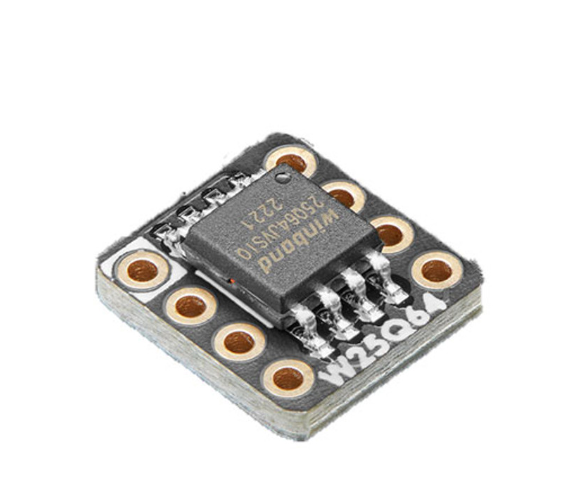 W25Q64JVSSIQ: Overview, Features, and Datasheet
W25Q64JVSSIQ: Overview, Features, and Datasheet25 October 20232611
![STP16NF06L N-Channel 60 V 16A Through Hole TO-220[Voideo]: Datasheet, Pinout, and Applications](https://res.utmel.com/Images/Article/d449711c-40c5-4202-a31c-5065166507ad.jpg) STP16NF06L N-Channel 60 V 16A Through Hole TO-220[Voideo]: Datasheet, Pinout, and Applications
STP16NF06L N-Channel 60 V 16A Through Hole TO-220[Voideo]: Datasheet, Pinout, and Applications28 March 20221106
![ADS1115 and ESP32 How to measure voltage?[Video]](https://res.utmel.com/Images/Article/c5ac35c4-d32f-4c4c-bd74-871fae51edb5.png) ADS1115 and ESP32 How to measure voltage?[Video]
ADS1115 and ESP32 How to measure voltage?[Video]15 April 202210207
 TDA7377 Class AB Car Radio Amplifier: Pinout, Datasheet pdf and Circuit
TDA7377 Class AB Car Radio Amplifier: Pinout, Datasheet pdf and Circuit07 December 202121821
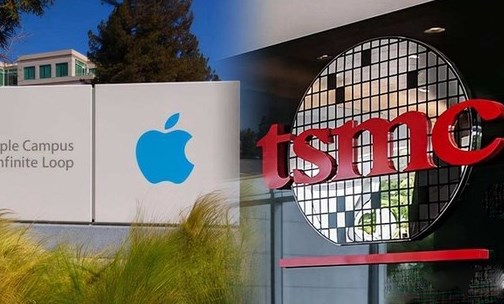 Apple Will Help TSMC to Be in the Leading Position in the Next Era
Apple Will Help TSMC to Be in the Leading Position in the Next Era16 March 20221973
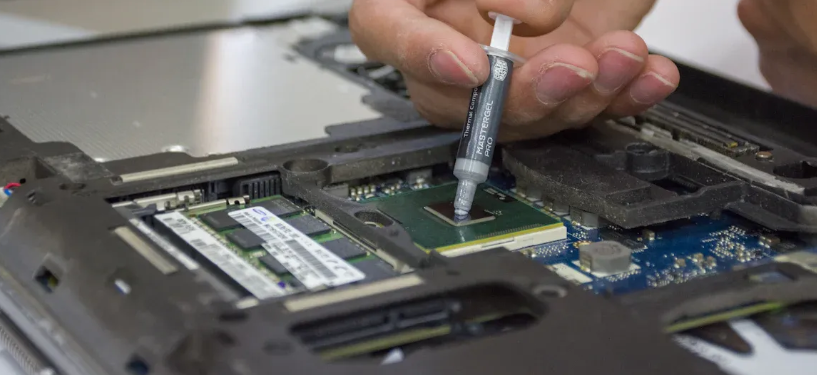 Thermal Pads vs Thermal Paste Understanding the Key Differences
Thermal Pads vs Thermal Paste Understanding the Key Differences19 July 2025960
 Voltage Regulator: Types, Working, and Applications
Voltage Regulator: Types, Working, and Applications23 February 202122119
 15 Key Elements of Diode Selection
15 Key Elements of Diode Selection26 November 202116025
 Will MicroLED replace LCD and OLED?
Will MicroLED replace LCD and OLED?31 August 20213047
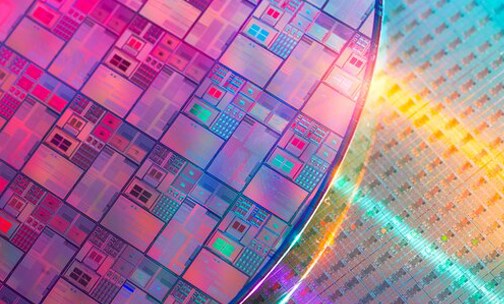 SEMI: Semiconductor Materials Market to Exceed US$70 Billion By 2023
SEMI: Semiconductor Materials Market to Exceed US$70 Billion By 202327 September 20221160
 Stanford Engineer Sheds Light on Semiconductors: Their Importance, Challenges, and Future
Stanford Engineer Sheds Light on Semiconductors: Their Importance, Challenges, and Future22 September 2023534
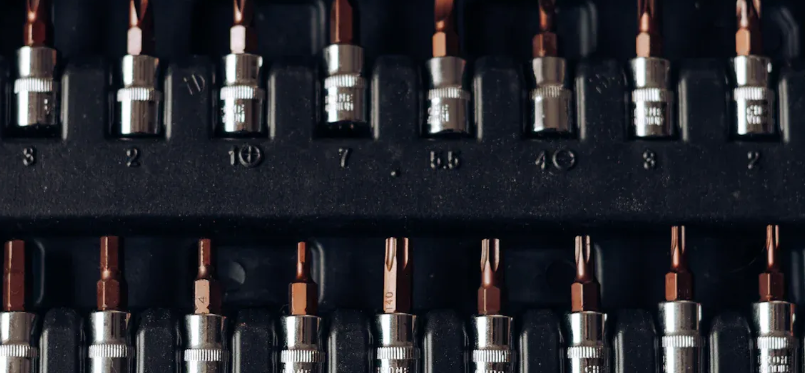 Beginner’s Handbook for Choosing Circular Connectors
Beginner’s Handbook for Choosing Circular Connectors14 July 20251388
Linear Technology/Analog Devices
In Stock
United States
China
Canada
Japan
Russia
Germany
United Kingdom
Singapore
Italy
Hong Kong(China)
Taiwan(China)
France
Korea
Mexico
Netherlands
Malaysia
Austria
Spain
Switzerland
Poland
Thailand
Vietnam
India
United Arab Emirates
Afghanistan
Åland Islands
Albania
Algeria
American Samoa
Andorra
Angola
Anguilla
Antigua & Barbuda
Argentina
Armenia
Aruba
Australia
Azerbaijan
Bahamas
Bahrain
Bangladesh
Barbados
Belarus
Belgium
Belize
Benin
Bermuda
Bhutan
Bolivia
Bonaire, Sint Eustatius and Saba
Bosnia & Herzegovina
Botswana
Brazil
British Indian Ocean Territory
British Virgin Islands
Brunei
Bulgaria
Burkina Faso
Burundi
Cabo Verde
Cambodia
Cameroon
Cayman Islands
Central African Republic
Chad
Chile
Christmas Island
Cocos (Keeling) Islands
Colombia
Comoros
Congo
Congo (DRC)
Cook Islands
Costa Rica
Côte d’Ivoire
Croatia
Cuba
Curaçao
Cyprus
Czechia
Denmark
Djibouti
Dominica
Dominican Republic
Ecuador
Egypt
El Salvador
Equatorial Guinea
Eritrea
Estonia
Eswatini
Ethiopia
Falkland Islands
Faroe Islands
Fiji
Finland
French Guiana
French Polynesia
Gabon
Gambia
Georgia
Ghana
Gibraltar
Greece
Greenland
Grenada
Guadeloupe
Guam
Guatemala
Guernsey
Guinea
Guinea-Bissau
Guyana
Haiti
Honduras
Hungary
Iceland
Indonesia
Iran
Iraq
Ireland
Isle of Man
Israel
Jamaica
Jersey
Jordan
Kazakhstan
Kenya
Kiribati
Kosovo
Kuwait
Kyrgyzstan
Laos
Latvia
Lebanon
Lesotho
Liberia
Libya
Liechtenstein
Lithuania
Luxembourg
Macao(China)
Madagascar
Malawi
Maldives
Mali
Malta
Marshall Islands
Martinique
Mauritania
Mauritius
Mayotte
Micronesia
Moldova
Monaco
Mongolia
Montenegro
Montserrat
Morocco
Mozambique
Myanmar
Namibia
Nauru
Nepal
New Caledonia
New Zealand
Nicaragua
Niger
Nigeria
Niue
Norfolk Island
North Korea
North Macedonia
Northern Mariana Islands
Norway
Oman
Pakistan
Palau
Palestinian Authority
Panama
Papua New Guinea
Paraguay
Peru
Philippines
Pitcairn Islands
Portugal
Puerto Rico
Qatar
Réunion
Romania
Rwanda
Samoa
San Marino
São Tomé & Príncipe
Saudi Arabia
Senegal
Serbia
Seychelles
Sierra Leone
Sint Maarten
Slovakia
Slovenia
Solomon Islands
Somalia
South Africa
South Sudan
Sri Lanka
St Helena, Ascension, Tristan da Cunha
St. Barthélemy
St. Kitts & Nevis
St. Lucia
St. Martin
St. Pierre & Miquelon
St. Vincent & Grenadines
Sudan
Suriname
Svalbard & Jan Mayen
Sweden
Syria
Tajikistan
Tanzania
Timor-Leste
Togo
Tokelau
Tonga
Trinidad & Tobago
Tunisia
Turkey
Turkmenistan
Turks & Caicos Islands
Tuvalu
U.S. Outlying Islands
U.S. Virgin Islands
Uganda
Ukraine
Uruguay
Uzbekistan
Vanuatu
Vatican City
Venezuela
Wallis & Futuna
Yemen
Zambia
Zimbabwe


















